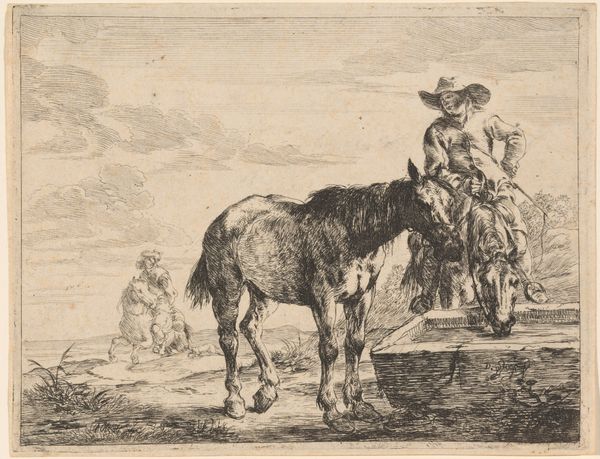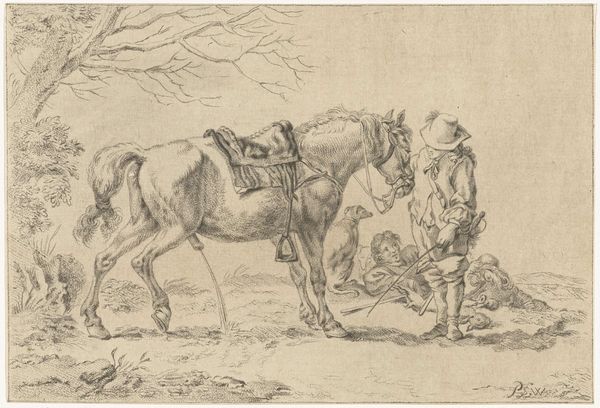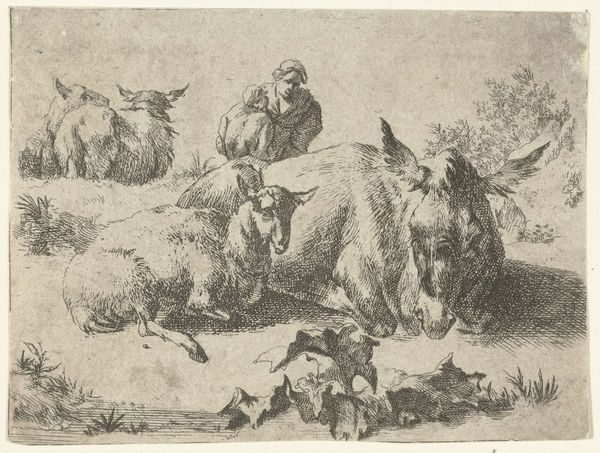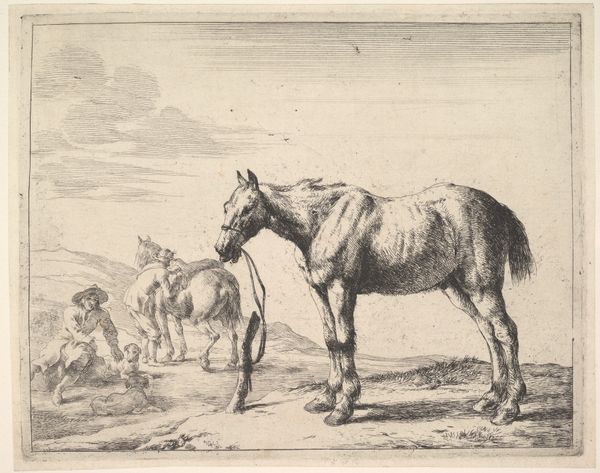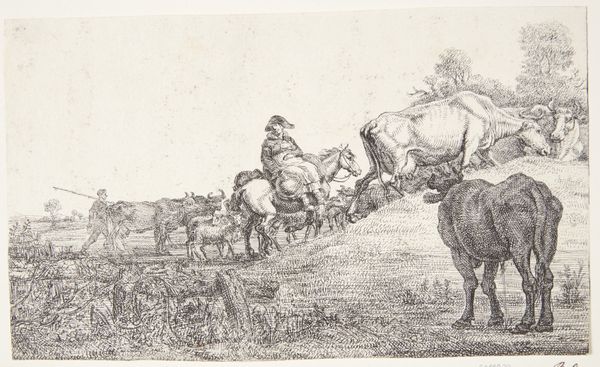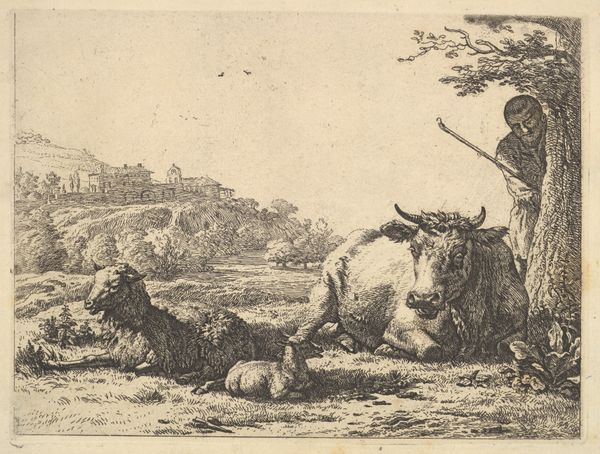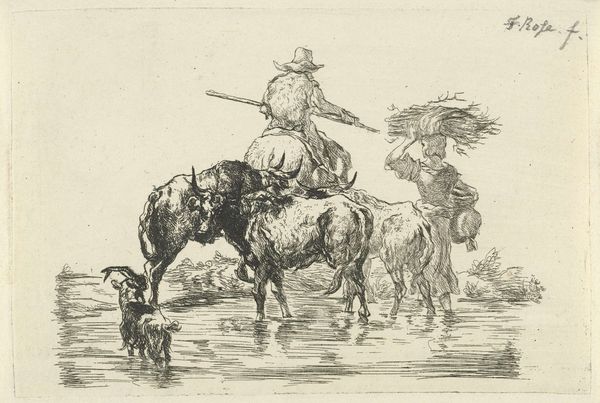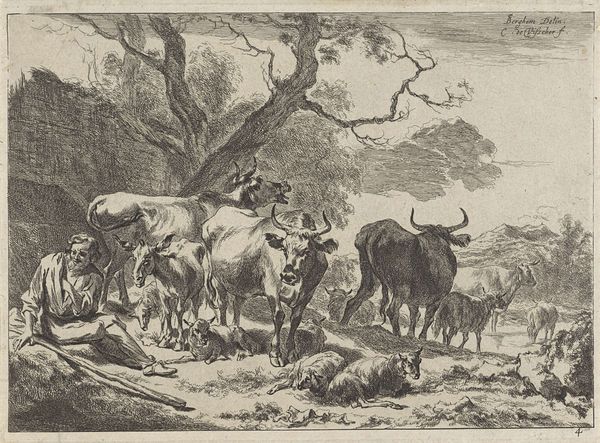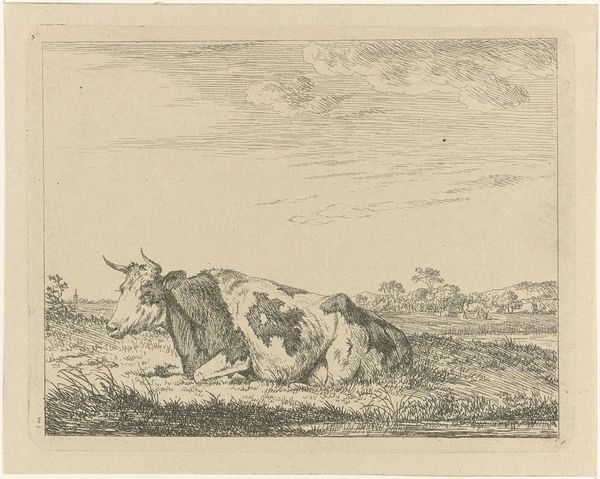
print, etching
#
baroque
#
dutch-golden-age
# print
#
etching
#
landscape
#
figuration
#
genre-painting
Dimensions: height 91 mm, width 122 mm
Copyright: Rijks Museum: Open Domain
Editor: So, this etching, "Two Herdsmen with Cows," by Romeyn de Hooghe, likely created between 1655 and 1667, strikes me as… surprisingly intimate. The figures almost blend with the animals, and the rough strokes make it feel very immediate. How do you interpret the scene, considering the socio-political environment of the time? Curator: The scene is indeed intimate. The Dutch Golden Age witnessed a flourishing of genre painting, and works like this catered to a burgeoning middle class eager for images reflecting their everyday lives and idealized rural settings. How might this image speak to a particular understanding – or perhaps misunderstanding – of rural life held by city dwellers? Editor: That’s interesting…so maybe this pastoral image served a sort of escapist fantasy for city residents? A way to connect with an idealized past, perhaps? Did art like this reinforce or challenge existing social hierarchies? Curator: Exactly! Consider the placement of such imagery. Where were these prints displayed, who purchased them? Were they used to furnish the homes of wealthy merchants who sought to legitimize their newly acquired social standing through associations with the "simple" life? This contrasts with the realities of rural labor and class structure of the time. Editor: Ah, so by presenting a harmonious, simplified image of country life, it almost obscures the more complex social relations that existed. The reality for most people working with animals back then probably wasn't so idyllic. Curator: Precisely. And thinking about the Baroque style, notice the dramatic, though subdued, contrast and how that might affect the reading of the imagery by an early modern public steeped in classicism and religious iconography. Do you think that de Hooghe, through this genre painting and stylistic elements, critiqued or reaffirmed these values? Editor: I never thought about landscape imagery playing such an important social role, not just reflecting but shaping perceptions of rural life and societal structures! I'll definitely keep that in mind going forward. Curator: It's a fruitful perspective. Recognizing art as part of complex systems of exchange can unveil subtle layers of meaning that are otherwise hidden.
Comments
No comments
Be the first to comment and join the conversation on the ultimate creative platform.
